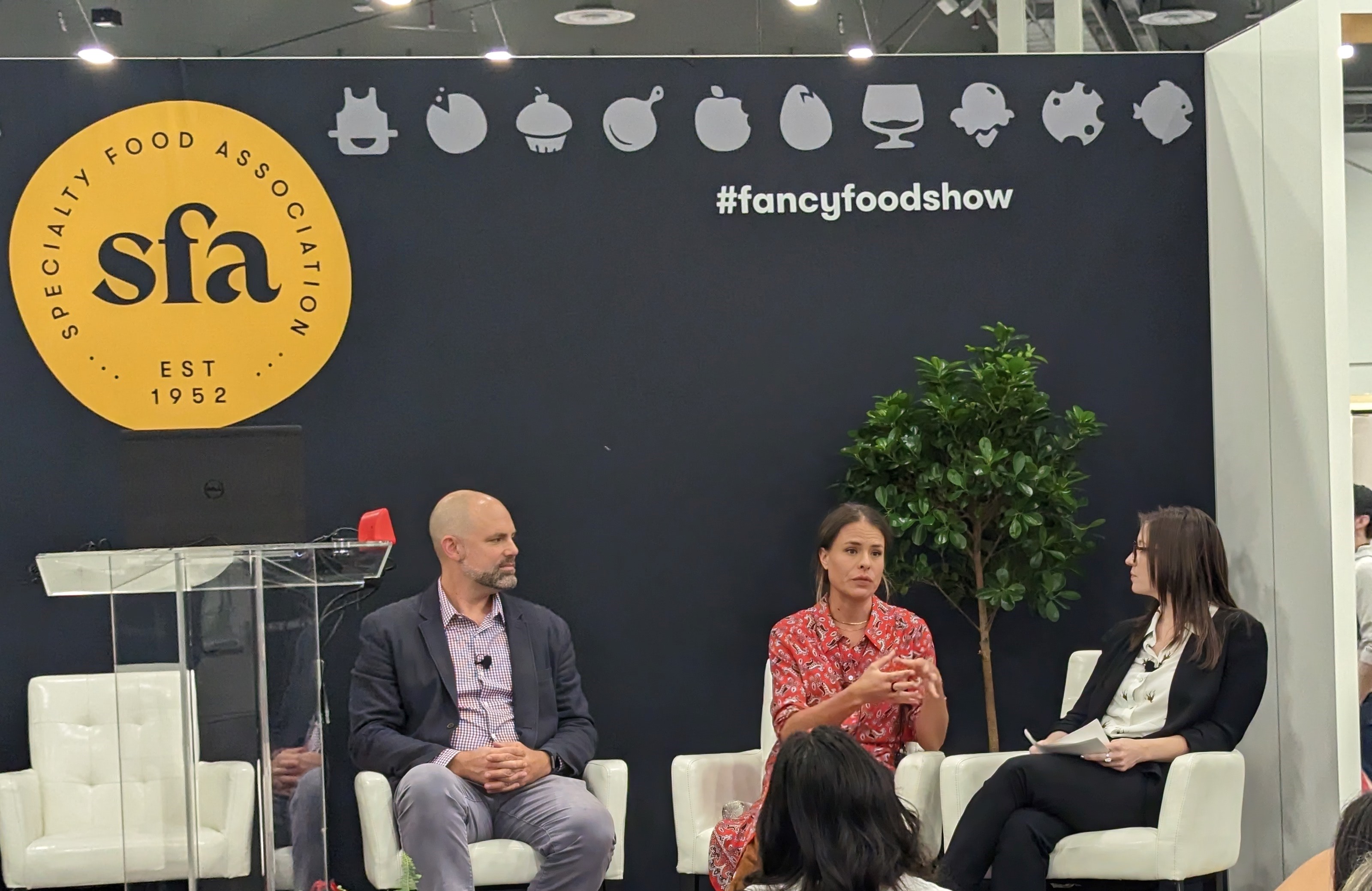Mission-driven companies are spearheading the upcycled food trend, where food byproducts are transformed into specialty items.
Angie Crone, interim CEO of the Upcycled Food Association moderated a discussion with Greg Nielsen, Octonuts Brand CEO, and Kaitlin Mogentale, CEO of Pulp Pantry, on the Winter Fancy Food Show Big Ideas stage, Sunday. Both brands repurpose food-safe food waste from landfills or energy-wasting ends and are passionate about sustainability and nourishing the population.
Each year 108 billion pounds of food is wasted in the U.S. alone. Both Nielsen and Mogentale voiced how much of this food contains the very nutrients that the population lacks.
“If every American were to eat their servings of fruits, vegetables, and fibers, we’d save hundreds of thousands of lives and billions of dollars in medical costs,” Mogentale said. “Around 34 percent of the total volume of food waste is from fruits and vegetables. The exact resources that we need to be eating more of in our diet are going away at the greatest rates.”
The sustainable solution Mogentale built was to capture fruit and vegetable waste and turn it into chips. With Octonuts, nut products made from high-quality California nut byproducts are being repurposed into a variety of formats, including protein powders and oils, with an emphasis on using the whole nut, rather than a portion of it.
“The innovation came from our founder, who was doing co-manufacturing for clients. He saw they were putting in good almond inputs and disposing of the output,” said Nielsen. This became an opportunity to reintroduce these outputs into the food stream rather than turn them into animal feed or compost.
But this trade doesn’t come without its challenges. Both panelists voiced that capital investment and branding can pose hurdles for the companies, especially as emerging market leaders.
The capital investments that result from transforming partner companies’ food waste practices to create food-safe byproducts can be difficult and making a product out of them that is delicious costs more R&D dollars.
But when it comes to consumer taste preferences, pricing, food safety, and sustainability, you can have it all with upcycled foods, Crone said.
Branding in this space requires a lot of education for the end consumer, many of whom don’t know what “upcycled” means or are wary of its association with waste or trash.
Crone shared an uplifting statistic: “95 percent of consumers agree that food waste is a problem… Once we inform the consumer and educate them, people are 70 percent more likely to purchase a product making [an upcycled food] claim.” This highlights the importance of education in this space, and how branding needs to accurately communicate the product’s story.
Collaboration can be a strong tool to help drive education in this space. For example, Mogentale shared that Mom’s Organic Market collaborated with a suite of brands to present upcycled items together in their stores. This facilitated a consumer-facing storytelling process for these brands and promoted customer excitement in the mission.
“The upcycled food industry is rooted in collaboration,” Mogentale said, noting its role in every stage of the process, from raw ingredient sourcing to selling to consumers. Everyone in the space is eager to enact change and is excited to work with each other to succeed.
The emerging market is filled with positivity: "I am thrilled to see what kind of products are coming out in this space," Nielsen concluded.
Related: Meal Starters, Global Pantry, and Non-Alcoholic Beverages Are On the Radar at Winter Show; Industry Voices: How Specialty Food Stakeholders Innovate
Editor’s Note: SFA News Daily misquoted Angie Crone in an earlier version of this article. It regrets the error.

